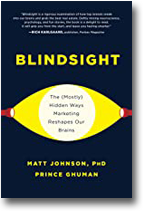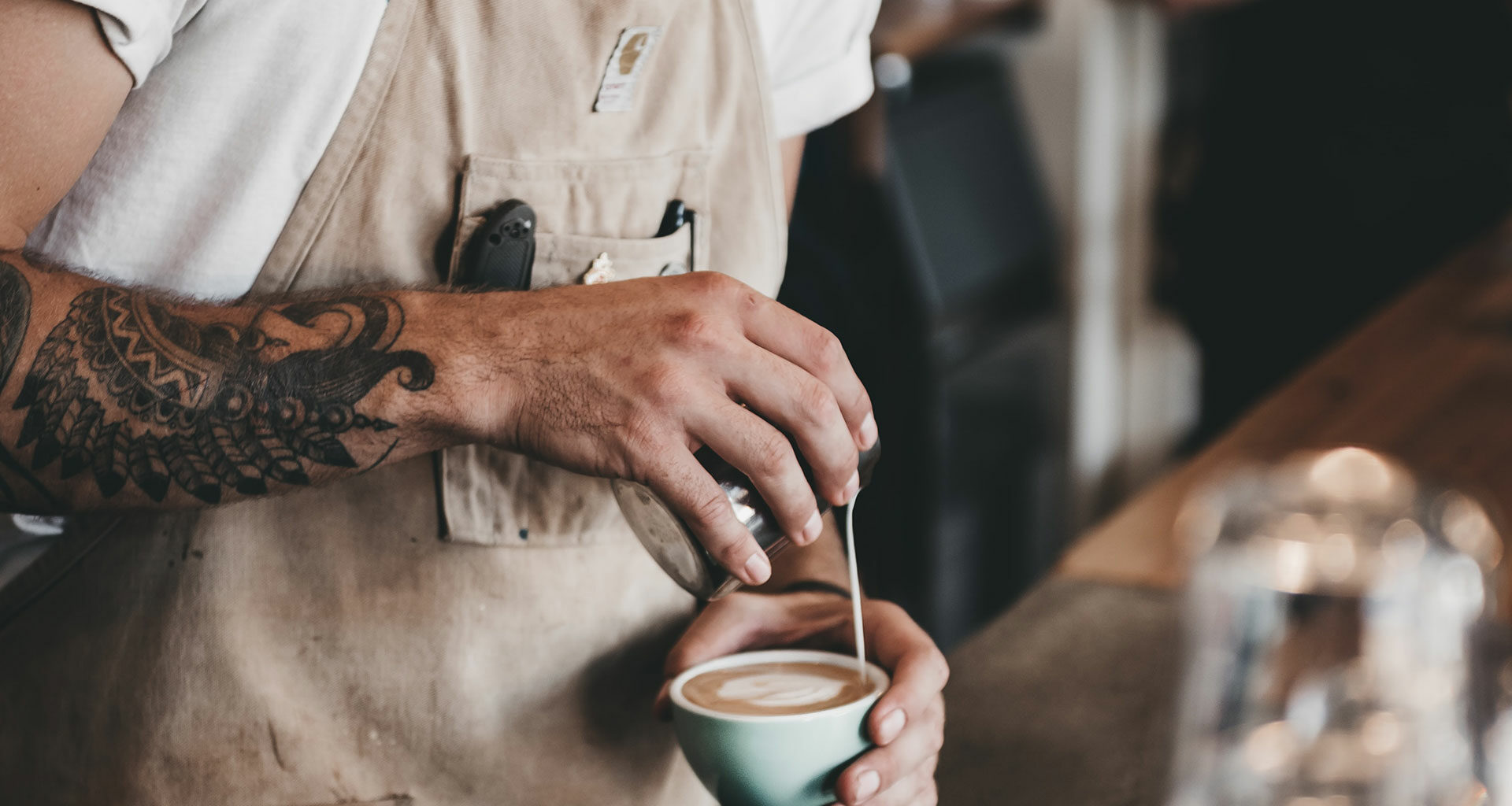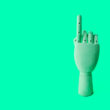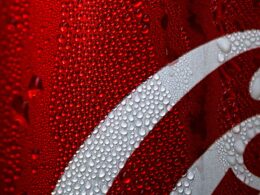In sum, blands are hipsters of branding: trying desperately to be different, but ultimately ending up the same.
One day, you’re enjoying your life, working hard, and making ends meet as a barista. The next day, you’re THE barista.
Such was the experience of Dustin Mattson, who became the literal face of the “hipster barista” meme. In 2011, the internet somehow found a picture of Mattson on his cafe’s website: Folding his arms with a stern expression. Black v-neck shirt, flame tattoos, glasses, all tied up with a scarf. He looked the part all to a V-neck T.
Before long, the memes over his picture quickly took the internet by storm:
-
$120,000 ART DEGREE
…DRAWS FACES IN LATTE FOAM -
I GOT THIS TATTOO FOR MY LOVE OF COFFEE
… AND THIS ONE BECAUSE IT’S IRONIC -
I TRY TO CONFRONT SOCIAL NORMS
…WHEN I MAKE MY COFFEE FOAM ART
The memes take various forms, but all center around the cliche that hipster baristas take their job way too seriously. But when he was interviewed about the memedom with Eater, a defiant Mattson proclaimed,
“…To me, it’s very telling how we laud farm-to-table food, craft beer, cocktail mixology, but it’s ok to have no respect for the specialty coffee world and the people who are committed to it. On the other hand, the whole thing only makes me want to work harder at my job, make better coffee, serve my customers better, and bring more positive exposure to both the company I work for, the barista profession, and specialty coffee as a whole.”
Needless to say, his response didn’t exactly help shatter this stereotype. In fact, it just inspired more memes.
All told, Dustin Mattison became the unsuspecting (and unfortunate) embodiment of the internet’s hipster ire. The massive popularity of his meme is a telling sign of just how deep the cultural fascination with hipsterdom goes.
Love it or hate it, hipster culture poses a key question: Why do attempts to be different all end up looking the same? Answering this can help us better understand people and cultures. But it can also teach us something crucial about another entity that strives to stand out: corporate brands.
Blands: The Hipsters of the Consumer World
However you slice it, brands must differentiate themselves from their competitors. How can the consumer choose you if they can’t even tell you apart? With any given industry, brands strive to carve out a distinct space in the mind of the consumer. Coke is the Classic soda, Pepsi is the Hip soda; Mercedes is “for riders”, BMW is “for drivers”. Nike is “athletic excellence”; Underarmour is the “triumphant underdog”. The list goes on and on.
So for a new brand to enter an existing market, they must take stock of these existing competitive landscapes, and find ways to differentiate from the field. But for many brands, especially those attempting to disrupt and rebel against the status quo of the industry, the attempts at being different are stunningly similar. Enter “blands”: the hipsters of the consumer world.
Within the last few years, there’s been a proliferation of Millennially-oriented direct-to-consumer brands. Brands like Quip, Casper, or Beltology all seek to disrupt the status quo of their industries, and in doing so, appeal to a clear “against the man” attitude of younger demographics.
The irony of course is their attempts to be different from the establishment, all end up making them look identical. And in practice becoming more “bland” than brand. As Ben Schott describes in Bloomberg, “..what makes a brand a bland is duality: claiming simultaneously to be unique in product, groundbreaking in purpose, and singular in delivery, while slavishly obeying an identikit formula of business model, look and feel, and tone of voice.”
As he goes on to describe in his piece entitled “Welcome to your bland new world”, blands tend to follow a very similar personality blueprint: the humble, value-driven, aspirational, underdog. And in expressing this, they generate a near-identical aesthetic: minimalist, neutral, with heavy beige and pastel tones.
The name of the brand itself is really the only thing that allows you to tell them apart. And even here, names tend to follow a similar pattern as well: The Color+Noun (e.g. Blue Apron, Red Antler, Purple Carrot), as well as the X “&” Y (e.g. Good & Gather, Frank & Oak) conventions are especially common.
In sum, blands are hipsters of branding: trying desperately to be different, but ultimately ending up the same. So why do attempts to be different end up being predictably similar? The answer may lie in social psychology, and in the brain’s semantic network.
The Hipster Effect and the Neuromarketing of Randomness and Associations
To better understand this, we need to turn back to the original (pun intended) bland: the hipster.
As we saw with poor Dustin, hipsters are an all too common target for derision. But when we dig deeper, there is actually a method to the hipster madness. It starts with our social biases. In any given society, there are going to be people who are more conformist and those who are more anti-conformist (e.g. hipsters).
The mathematician Jonathan Touboul of Brandeis University has created computer models which simulate this, finding that, over time, these differences become more and more polarized: the hipster population consistently undergoes a transition in which members become synchronized with each other in their anti-conformist tendencies.
Or as Leonardo Dicaprio told us in The Beach about his philosophy of travel, “we all try to do something different, but we all end up doing the same thing”.
This may also be fueled by the way our brains naturally organize information, with related items being more closely connected in the brain’s semantic networks. We naturally think of “tree” when we think of “leaf”, and we naturally think of “pants” when we think of “shirt”.
These types of associations can be tested in simple behavioral priming paradigms. When you hear the word “water” you’re much faster to respond to the word “ocean” than you are something completely unrelated like, “bicycle”. The reason for this is that “tree” primes the related terms in the brain’s semantic network, making related words like “leaf” easier to retrieve.
So far, pretty straightforward. But how do opposites feature in our semantic network? We might think, intuitively, that opposites are organized as “far” away as possible. That is “dark” is very distant from “light”.
However, opposites naturally imply their counterpart. You can’t know one without the other. For example, “light” can only be understood in relation to “darkness”, “happiness” with “sadness”, “full” with “emptiness”, etc.
And this plays out in priming studies as well: “Water” primes related words like “ocean”, “lake”, or “cup. But it also primes its direct opposite: “fire”.
They say opposites attract. But in fact, they are strangely similar at their underlying level. Semantically, they are still related, since opposites imply each other.
It’s the same when it comes to anti-conformity. The opposite of conformity isn’t individuality; it’s anti-conformity. So when an anti-conformist – whether a brand or a person, wants to go against the establishment, they naturally gravitate towards the same, polar opposite.
On Brands, Blands, and Hipsters
As we’ve seen, irony has a special place in the human psyche. And hipsterdom, at its core, is the embodiment of ironic anti-conformity: A group of people who all want to be different from the norm, but in doing so, all appear the same.
And like irony, hipsterdom may always be a little bit mysterious. We may never fully understand why someone would want to rock a finely curled handlebar mustache, host a goat cheese blog, or wear t-shirts featuring various power rangers. But through diving deeper into the science, we can better understand this relationship between conformity and hipsterdom.
For people, trying to be an anti-conformist will typically take you into hipsterdom. And for millennial-focused D2C brands, into the realm of “blands”.
For Dustin Mattson, the viral period of the meme was thankfully brief. Following the meme’s intense viral period, things quickly went back to normal at Counter Culture Coffee, and he’s claimed that only a single real-life customer – a child, actually recognized him from the meme.
He’s even joked about the original interview, in which he was ridiculed for “confirming his hipster status” by strongly defending specialty coffee. Reflecting on that response, he told NewStatesman,
“I still very much believe that but at the time me expressing that almost seemed to fuel some of the actual attitudes towards the meme…”
Sometimes irony is too palpable to ignore. But other times, you’ve just gotta sit back and appreciate that artisanal Americano from Counter Culture Coffee like the dedicated, tattooed barista intended.
 Matt Johnson, PhD and Prince Ghuman are founders of “PopNeuro – a Neuromarketing Blog for the masses” and co-author of “Blindsight – The (mostly) hidden ways marketing reshapes our brains”. You can check out more of their writing here.
Matt Johnson, PhD and Prince Ghuman are founders of “PopNeuro – a Neuromarketing Blog for the masses” and co-author of “Blindsight – The (mostly) hidden ways marketing reshapes our brains”. You can check out more of their writing here.
This article originally appeared in PopNeuro. Photo by Brent Gorwin on Unsplash.












